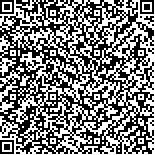王海南,刘鹏,张明,等.基于中文版上肢技巧质量测试的个体化训练联合镜像疗法对脑瘫患儿上肢运动功能和日常生活活动能力的影响[J].中华物理医学与康复杂志,2024,46(6):506-511
扫码阅读全文

|
| 基于中文版上肢技巧质量测试的个体化训练联合镜像疗法对脑瘫患儿上肢运动功能和日常生活活动能力的影响 |
|
| |
| DOI:10.3760/cma.j.issn.0254-1424.2024.06.004 |
| 中文关键词: 中文版上肢技巧质量测试 镜像疗法 痉挛型偏瘫脑性瘫痪 上肢运动功能 日常生活活动 |
| 英文关键词: Upper extremity skills testing Mirror therapy Spastic hemiplegia Cerebral palsy Upper limb motor function Activities of daily living |
| 基金项目:徐州市国家临床重点专科培育项目(2018ZK002);徐州市卫生健康委青年医学科技创新项目(XWKYHT20200007) |
|
| 摘要点击次数: 2720 |
| 全文下载次数: 2929 |
| 中文摘要: |
| 目的 探究基于中文版上肢技巧质量测试(Ch-QUEST)的个体化训练联合镜像疗法(MT)对痉挛型偏瘫脑性瘫痪(SHCP)患儿上肢运动功能、日常生活活动(ADL)能力的影响。 方法 选取SHCP患儿45例,按随机数字表法随机分为对照组(15例)、观察1组(15例)和观察2组(15例)。3组患儿均接受常规康复治疗,包括运动疗法、物理因子疗法、作业疗法等,在此基础上对照组增加40 min的常规上肢功能训练;观察1组在常规康复治疗的基础上增加25 min的常规上肢功能训练和15 min的MT训练;观察2组则增加10 min的常规上肢功能训练、15 min的MT训练和15 min的Ch-QUEST个体化训练。以上训练均为每天1次,每周5 d,连续治疗12周。于治疗前、治疗12周后(治疗后)采用粗大运动功能评估-88(GMFM-88)、Carroll上肢功能评估(UEFT)、儿童功能独立性评估(WeeFIM)和握力、捏力测试系统分别评估3组患儿的粗大运动能力、手功能、ADL能力以及患手的握力和捏力。观察2组患儿于治疗前和治疗后另进行Ch-QUEST评估。 结果 治疗后,3组患儿的GMFM-88、UEFT、WeeFIM评分与组内治疗前比较,差异均有统计学意义(P<0.05),且观察2组治疗后的GMFM-88评分[(229.13±10.91)分]、UEFT评分[(86.93±8.10)分]和WeeFIM评分[(102.07±16.42)分]均显著优于观察1组和对照组治疗后,差异均有统计学意义(P<0.05)。治疗后,3组患儿手部的握力峰值和后60%平均握力值,以及拇指与示指的捏力峰值和后60%平均捏力值与组内治疗前比较,差异均有统计学意义(P<0.05),且观察2组治疗后的手部的握力峰值和后60%平均握力值,以及拇指与示指的捏力峰值和后60%平均捏力值均显著优于观察1组和对照组治疗后,差异均有统计学意义(P<0.05)。 结论 Ch-QUEST指导下的个体化训练联合MT训练可更好地改善SHCP患儿的上肢运动功能和ADL能力。 |
| 英文摘要: |
| Objective To explore the effectiveness of combining individualized training based on the Chinese quality of upper extremity skill test (Ch-QUEST) with mirror therapy (MT) in rehabilitating the upper limb motor function of children with unilateral spastic cerebral palsy (SHCP). Methods Forty-five children with unilateral spasticity from cerebral palsy were randomly divided into a control group and two observation groups, each of 15. All received routine rehabilitation including kinesitherapy, physical factor therapy and occupational therapy. Five days a week for 12 weeks the control group underwent 40 minutes of routine upper limb function training. Observation group 1 completed 25 minutes of the routine upper limb function training and 15 minutes of MT, while observation group 2 finished 10 minutes of routine upper limb function training, 15 minutes of MT and 15 minutes of individualized instruction based on the Ch-QUEST. Before and after the experiment, all the three groups were assessed using gross motor function measure-88 (GMFM-88), the Carroll upper extremity function test (UEFT), the functional independence measures for children (WeeFIM) and the E-LINK system. Results After the treatment the average GMFM-88, UEFT and WeeFIM scores of all three groups had improved, with the greatest average improvements in observation group 2. There were also significant grip strength improvements, with those of group 2 significantly better than among the other two groups on average. Conclusion Combining Ch-QUEST-guided individualized training with mirror therapy can better improve the upper limb motor function and ADL of children with SHCP. |
|
查看全文
查看/发表评论 下载PDF阅读器 |
| 关闭 |